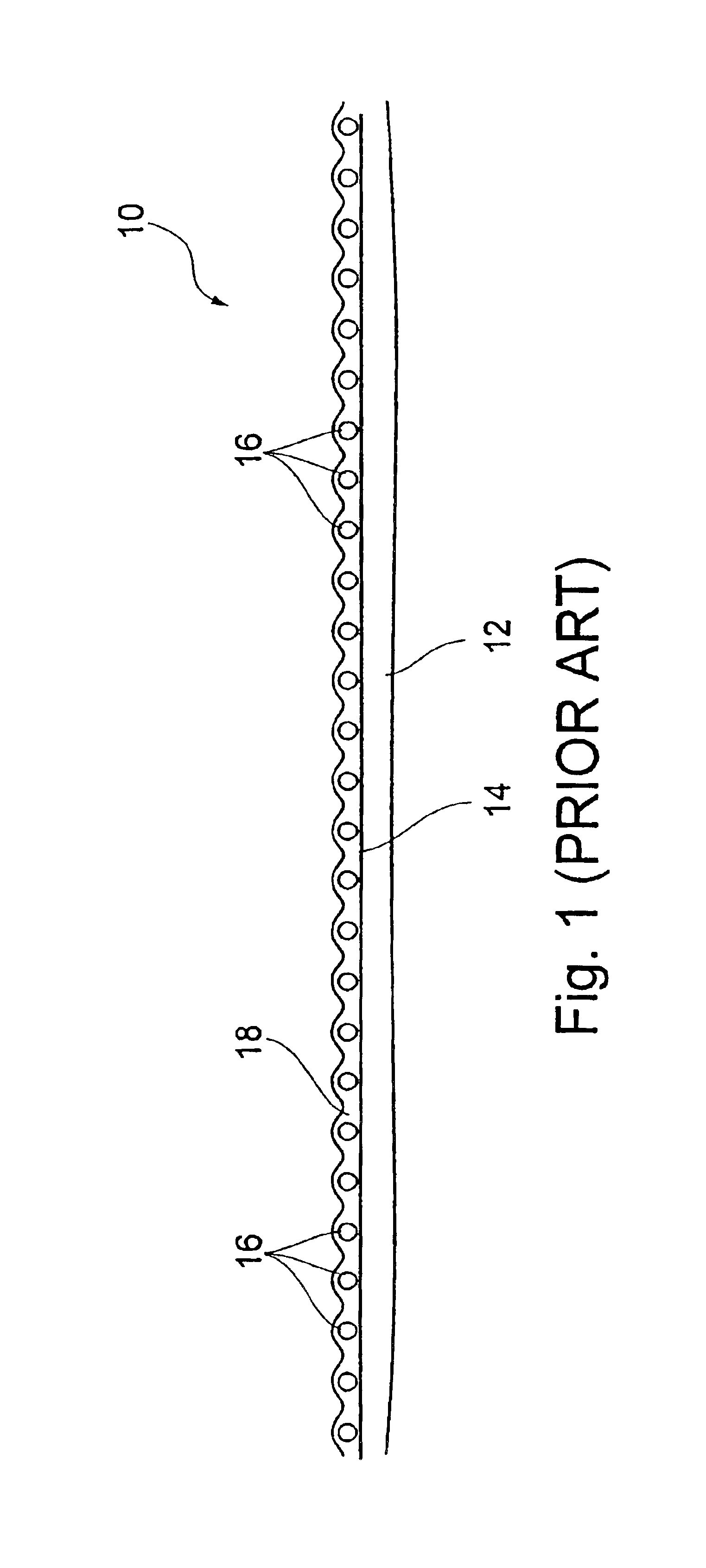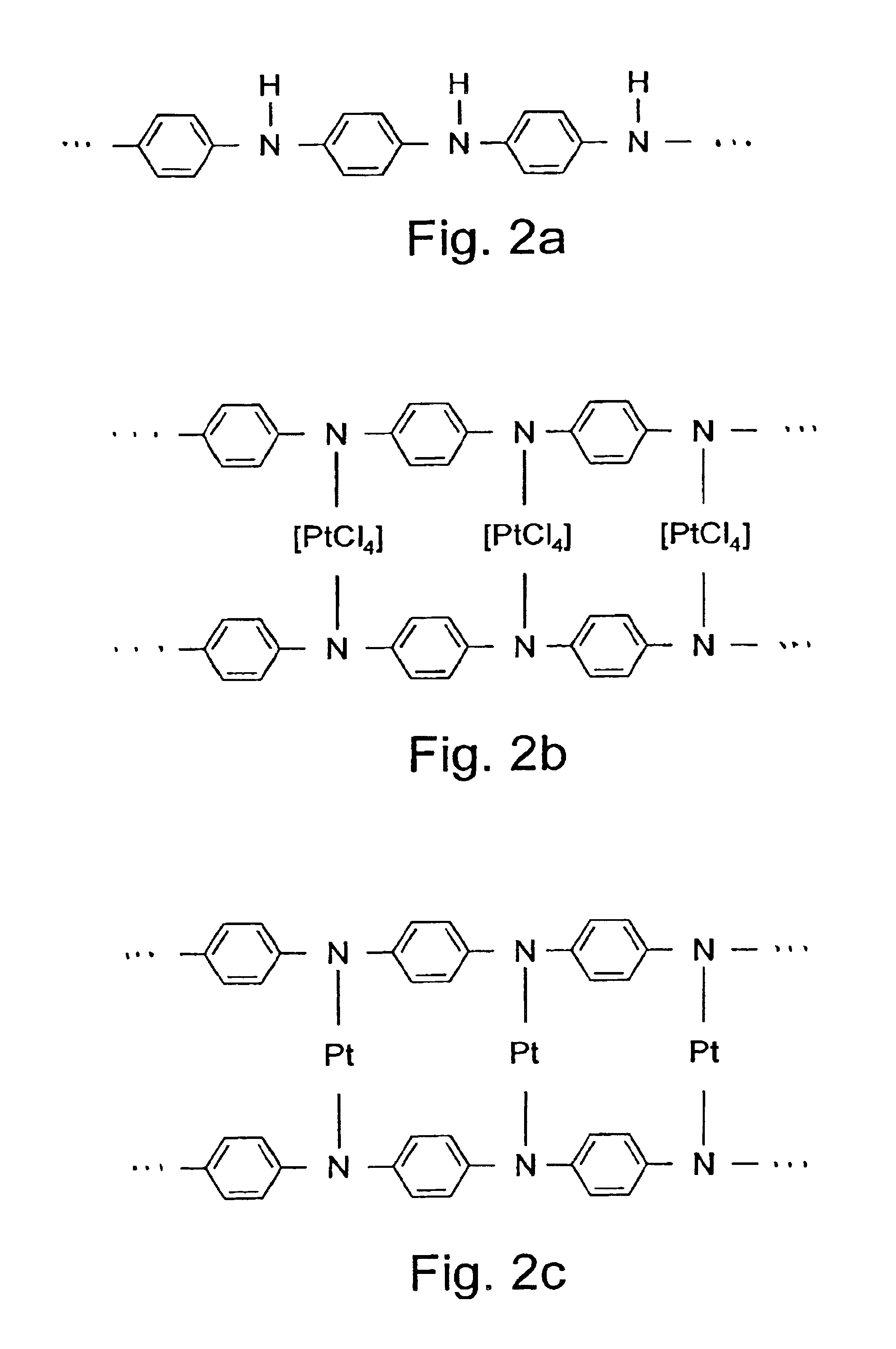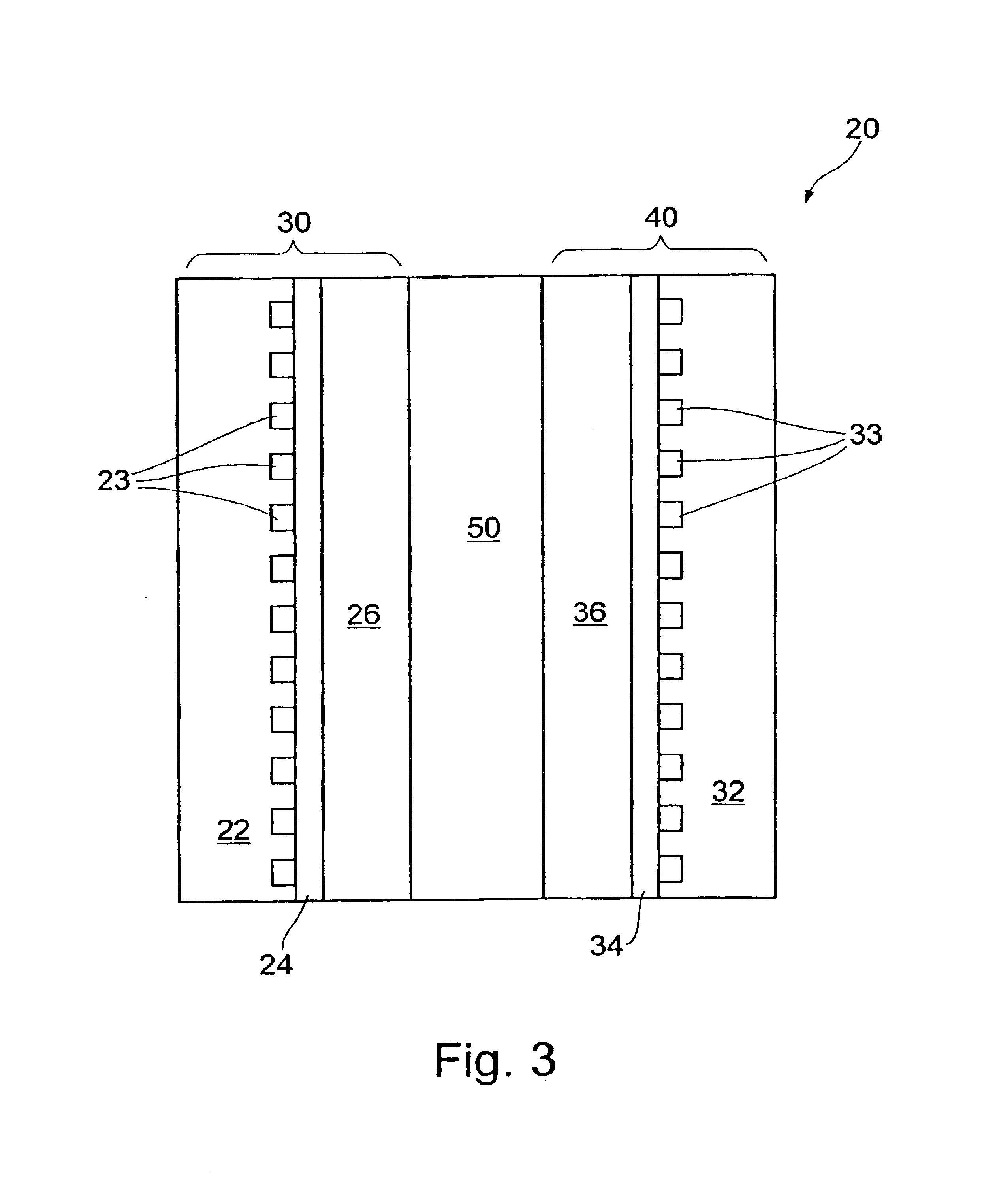Class of electrocatalysts and a gas diffusion electrode based thereon for fuel cells
- Summary
- Abstract
- Description
- Claims
- Application Information
AI Technical Summary
Benefits of technology
Problems solved by technology
Method used
Image
Examples
example 1
5.12 g of polyaniline powder (in basic form) and 100 ml of distilled water were mixed in an Erlenmeyer flask for 30 minutes to prepare an aqueous suspension of polyaniline. 110 ml of 0.98% aqueous H2PtCl6 were slowly added to this suspension over the course of 60 minutes while stirring constantly. The resulting polyaniline-PtCl4 complex was separated by centrifuging and decanting. The resulting solid filtrate was colorless, unlike the initial polyaniline suspension, which was yellow, showing that the H2PtCl6 had reacted with the polyaniline. The filtrate was rinsed with distilled water until the rinse water had a pH of 7.
A reductant solution was prepared by dissolving 1.5 g NaBH4 and 0.7 g NaOH in 100 ml of distilled water at room temperature with stirring for 30 minutes. The polyaniline-PtCl4 complex filtrate was placed in an Erlenmeyer flask, and the reductant solution was added dropwise while stirring over the course of 2 hours and heating gently, to no more than 60° C. The produ...
example 2
As in example 1, 4.73 g of polyaniline were suspended in 100 ml of distilled water. 80 ml of 1.15% aqueous H2IrCl6 were added slowly to the polyaniline suspension over the course of 60 minutes while stirring constantly. The resulting polyaniline-IrCl4 complex was separated by centrifuging and decanting. The resulting solid was rinsed with distilled water until the rinse water had a pH of 7.
The reductant solution of Example 1 was added to the polyaniline-IrCl4 complex over the course of 2 hours at a temperature of 60° C. The product of this reaction was rinsed with distilled water until the rinse water had a pH of 7, and then was dried at 110° C. for 24 hours.
example 3
4.90 g of polypyrrole powder were suspended in 100 ml of distilled water. 105 ml of 0.98% aqueous H2PtCl6 were added to the polypyrrole suspension over the course of 60 minutes while stirring constantly. The resulting polypyrrole-PtCl4 complex was separated by centrifuging and decanting. The resulting solid was rinsed with distilled water until the rinse water had a pH of 7.
The reductant solution of Example 1 was added to the polypyrrole-PtCl4 complex at a temperature of 60° C. over the course of 2 hours. The product of this reaction was rinsed with distilled water until the rinse water had a pH of 7, and then was dried at 110° C. for 24 hours.
PUM
| Property | Measurement | Unit |
|---|---|---|
| Fraction | aaaaa | aaaaa |
| Volume | aaaaa | aaaaa |
| Volume | aaaaa | aaaaa |
Abstract
Description
Claims
Application Information
 Login to View More
Login to View More - R&D
- Intellectual Property
- Life Sciences
- Materials
- Tech Scout
- Unparalleled Data Quality
- Higher Quality Content
- 60% Fewer Hallucinations
Browse by: Latest US Patents, China's latest patents, Technical Efficacy Thesaurus, Application Domain, Technology Topic, Popular Technical Reports.
© 2025 PatSnap. All rights reserved.Legal|Privacy policy|Modern Slavery Act Transparency Statement|Sitemap|About US| Contact US: help@patsnap.com



